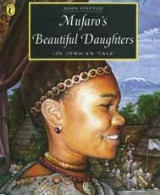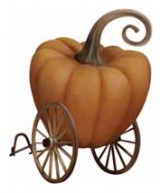Can your class trace the plot lines from one Cinderella story to another, asks Gill Matthews?
Traditional tales are a great vehicle for exploring and comparing stories from other cultures as there are so many versions from around the world. This article focuses on Cinderella, although other traditional tales could also be used.
Cinderella-type tales generally follow the story of a main female character who shows a great deal of kindness but is mistreated by her step-family after the death of her mother. Depending on the version, herfather is either absent or neglectful. A character with magical powershelps the heroine to triumph over the bullies and achieve happiness by the end of the tale.
The earliest recorded version of Cinderella is Yeh Shen, a Chinese tale believed to date from the 9th century. There are also versions originating in Africa, Asia and North America. The well known European version was written by Frenchman Charles Perrault in the late 17th century.
Although only one version of Cinderella from other cultures is used in these activities – Mufaro’s Beautiful Daughters – there are many others that could be included as well as, or instead of this.
Introduce the tale…
 Bring various artefacts into the classroom e.g. a red cloak, some porridge, a pea, a mirror. Ask the children if they can identify which story the artefacts might represent. Challenge children, in small groups, to list as many traditional tales as they can. From these group lists, create a class list.
Bring various artefacts into the classroom e.g. a red cloak, some porridge, a pea, a mirror. Ask the children if they can identify which story the artefacts might represent. Challenge children, in small groups, to list as many traditional tales as they can. From these group lists, create a class list.
Read a traditional European version of Cinderella (such as that retold by Kathleen Lines in The Hutchinson Treasury of Fairy Tales) to the class and together list the features that make it a traditional tale e.g.
Theme – good overcoming evil or kindness is rewarded
Characters – good (Cinderella), evil (stepmother and step-sisters), royalty (prince), character with magical powers (fairy godmother)
Typical settings – long ago, modest home, castle
Structure – patterned beginning, problem, resolution and patterned ending
Language features – Once upon a time; happily ever after
Break down the plot…
 Re-read the traditional version of Cinderella to the children and create a story map that shows the main events in the story. With the children, use the story map to develop an oral retelling of the story. Practise the retelling until the children are able to retell it without your support.
Re-read the traditional version of Cinderella to the children and create a story map that shows the main events in the story. With the children, use the story map to develop an oral retelling of the story. Practise the retelling until the children are able to retell it without your support.
Explain that, originally, traditional tales weren’t written down but were told by story tellers all over the world and that they have changed and been developed over the years. As a result, there are many different versions from other countries and cultures.
Read a version of Cinderella from another culture to the class e.g. Mufaro’s Beautiful Daughters. Through discussion, establish that there are similarities between this story and Cinderella. Together, create a story map depicting the key events in Mufaro’s Beautiful Daughters.
Compare this with the Cinderella story map and discuss similarities and differences between the plots of the two stories.
Explore characters and themes…
 Return to, and remind children of, the list of features they made after hearing the traditional version of Cinderella in Activity 1.
Return to, and remind children of, the list of features they made after hearing the traditional version of Cinderella in Activity 1.
Focus on the theme of Mufaro’s Beautiful Daughters and establish that it is the same as that of Cinderella. Explain that traditional stories were originally told to teach a lesson or moral to the listeners.
Ask children to work in groups and to see if they can identify parallels between the characters in Cinderella and Mufaro’s Beautiful Daughters e.g. who is the Cinderella character, the step sister character?
Return to the character of Cinderella in the traditional version of the story. Explore her character by asking children to consider some of these questions:
• Why do you think Cinderella is so badly treated by her step-mother and step-sisters?
• What kind of person do you think Cinderella is and how do you know?
• How would you have felt if you were Cinderella?
• How would you have behaved if you were Cinderella?
• Why do you think her step father doesn’t stop the other characters from treating her so badly?
Ask similar questions about Nyasha in Mufaro’s Beautiful Daughters.
You may wish to develop children’s understanding of characterisation through hot seating and other role play activities.
Through discussion, establish that even though the two stories were told in different countries, thousands of miles apart, the similarities show that the two cultures had very similar values and beliefs.
Compare different settings…
The illustrations in Mufaro’s Beautiful Daughters were inspired by ancient ruins in Zimbabwe. In contrast, the picture book Ella’s Big Chance is the story of Cinderella set in 1920s Europe.
Children could compare the backgrounds of the illustrations, noting the contrast between the rural and urban settings in the two books. The clothing and hairstyles of the characters could also be compared.
Establish that all of these aspects give clues about when and where the two versions are set and yet, despite the very obvious visual differences, the stories remain similar.
Subvert stereotypes…
Use the Talk for Writing ‘boxing up’ technique to break the story of Cinderella down into basic, generic steps:
 1. Main character bullied by family
1. Main character bullied by family
2. Invitation to a grand event arrives
3. Family go to the grand event, leaving main character behind
4. Character with magical powers arranges for main character to attend the grand event
5. Main character meets hero but leaves an item behind
6. Hero finds main character by reuniting them with the item
7. Main character and hero live happily ever after
Read an alternative, or spoof, version of Cinderella e.g. Prince Cinders by Babette Cole. Ask the children to check whether it more or less fits with the boxed up version.
Discuss the notion of stereotypical characters in traditional tales. Establish that spoof versions overturn stereotypes and explore how Babette Cole has achieved this. Children can then write their own spoof, using the boxed up version to structure their story.
Arrange a story telling slam, where children can tell their spoofs to an invited audience
Cinderella, Kathleen Lines, in The Hutchinson Treasury of Fairy Tales (Hutchinson Children’s Books, 1999)
Mufaro’s Beautiful Daughters, John Steptoe (Puffin Books, 1997)
Ella’s Big Chance, Shirley Hughes (Random House, 2003)
Prince Cinders, Babette Cole (Puffin, 1997)
For more information on Talk for Writing, visit http://www.nationalstrategies.standards.dcsf.gov.uk
